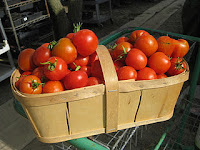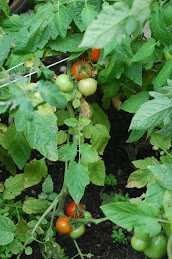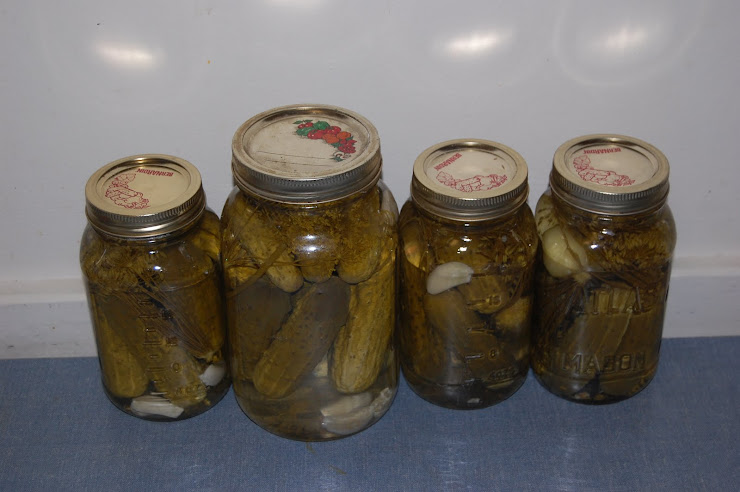
Look what arrived in the mail last week!! My cheese making kit from Glengarry Cheese Supplies.

And that jar of milk is local and unpasturized and there's about 5 inches of cream floating on top.....
 So it seems making your own dairy products is the hot trend this year and looks I am no exception. I've often made my own yogurt and I made cheese once a few years ago on a field trip to Iowa (long story) but I found it difficult to locate the supplies to do it at home. I've known of Glengarry Cheese for a long time; they're located in eastern Ontario and a regular pit stop on trips to Quebec- fresh curds, yum..... But trying figure out which supplies and equipment I'd need always seemed daunting and expensive.
So it seems making your own dairy products is the hot trend this year and looks I am no exception. I've often made my own yogurt and I made cheese once a few years ago on a field trip to Iowa (long story) but I found it difficult to locate the supplies to do it at home. I've known of Glengarry Cheese for a long time; they're located in eastern Ontario and a regular pit stop on trips to Quebec- fresh curds, yum..... But trying figure out which supplies and equipment I'd need always seemed daunting and expensive. Lately I've been reading about many people's adventures in home made cheese and I decided it can't be that challenging. So I checked out the cheesemaking supplies page, spoke to a live person at the shop by phone to make sure I understood everything (thanks Ann Marie), and took the plunge!
The kit I ordered is for making soft cheese- quark, feta, ricotta, and sour cream and included 4 baskets,a muslin curd draining bag, cheese netting, and a thermometer as well as the rennet and mesophillic culture needed. I also added a second thermophillic culture to make mozzarella. Including shipping it came to just under C$100. It a large outlay but the hardware will be used over and over and the cultures are enough to do many batches of cheese. When I feel competent I will likely splurge for the hard cheese kit since it comes with moulds as well!
The recipe book that came with the kit has clear instruction on how to prep your supplies and workspace- cross contamination is a big issue for cheesemaking. It also includes instructions on how to make a mesophillic culture using the powdered culture as a starter- the method is almost identical to making yogurt and creates a mother that can be used to inoculate continuous batches! It would be very useful if you plan to make a lot of cheese and don't wish to be purchasing large quantities of starter all the time. A similar method is available for the thermophillic culture as well.
I decided to make feta for my first attempt- it's one of the easier recipes and doesn't need a large quantity of milk. Since it was my first experience with raw milk as well I only purchased two litres. There are so many great resources online with full instructions that I'm not going to write step by step instructions here but I have included a number of photos - I had to document my first solo attempt!

Heating the milk to 30 ° C before adding the rennet.

I has curds!
 Stacked in baskets.
Stacked in baskets.
I ended up with two disc of lovely cheese and in the recipe it mentions two ways of curing feta. One is the the traditional, floating in brine, which can be eaten immediately and the other is a dry salted version which is left to age for up to 30 days in the fridge and makes a less crumbly cheese. I decided to try both methods and I'll let you know which we prefer.

Now I have to go order more milk!





















 Melt fat in a cast iron or similar frying pan. Add bacon pieces and saute for about one minute on med heat(longer if you like your bacon crispy- I don't). Add all veggies and saute until soft,about 5-7 minutes. Add maple syrup, stir to coat evenly. Turn off heat and allow to rest so flavours mingle but sugars don't burn. Serve as a side or a meal on it's own (feeds 2).
Melt fat in a cast iron or similar frying pan. Add bacon pieces and saute for about one minute on med heat(longer if you like your bacon crispy- I don't). Add all veggies and saute until soft,about 5-7 minutes. Add maple syrup, stir to coat evenly. Turn off heat and allow to rest so flavours mingle but sugars don't burn. Serve as a side or a meal on it's own (feeds 2).
























.jpg)



